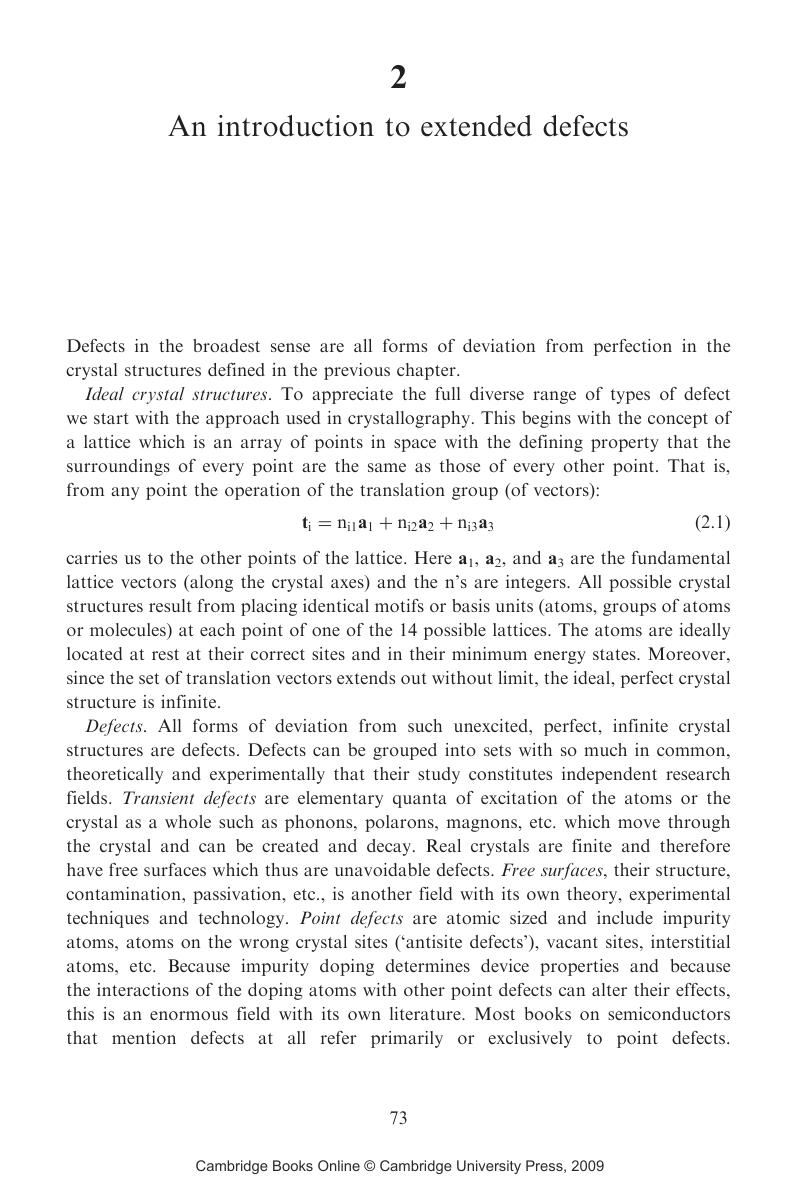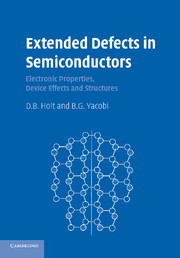Book contents
- Frontmatter
- Contents
- Preface
- 1 Semiconducting materials
- 2 An introduction to extended defects
- 3 Characterization of extended defects in semiconductors
- 4 Core structures and mechanical effects of extended defects specific to semiconductors
- 5 The electrical, optical and device effects of dislocations and grain boundaries
- 6 Point defect materials problems
- Index
- References
2 - An introduction to extended defects
Published online by Cambridge University Press: 10 September 2009
- Frontmatter
- Contents
- Preface
- 1 Semiconducting materials
- 2 An introduction to extended defects
- 3 Characterization of extended defects in semiconductors
- 4 Core structures and mechanical effects of extended defects specific to semiconductors
- 5 The electrical, optical and device effects of dislocations and grain boundaries
- 6 Point defect materials problems
- Index
- References
Summary

- Type
- Chapter
- Information
- Extended Defects in SemiconductorsElectronic Properties, Device Effects and Structures, pp. 73 - 121Publisher: Cambridge University PressPrint publication year: 2007



